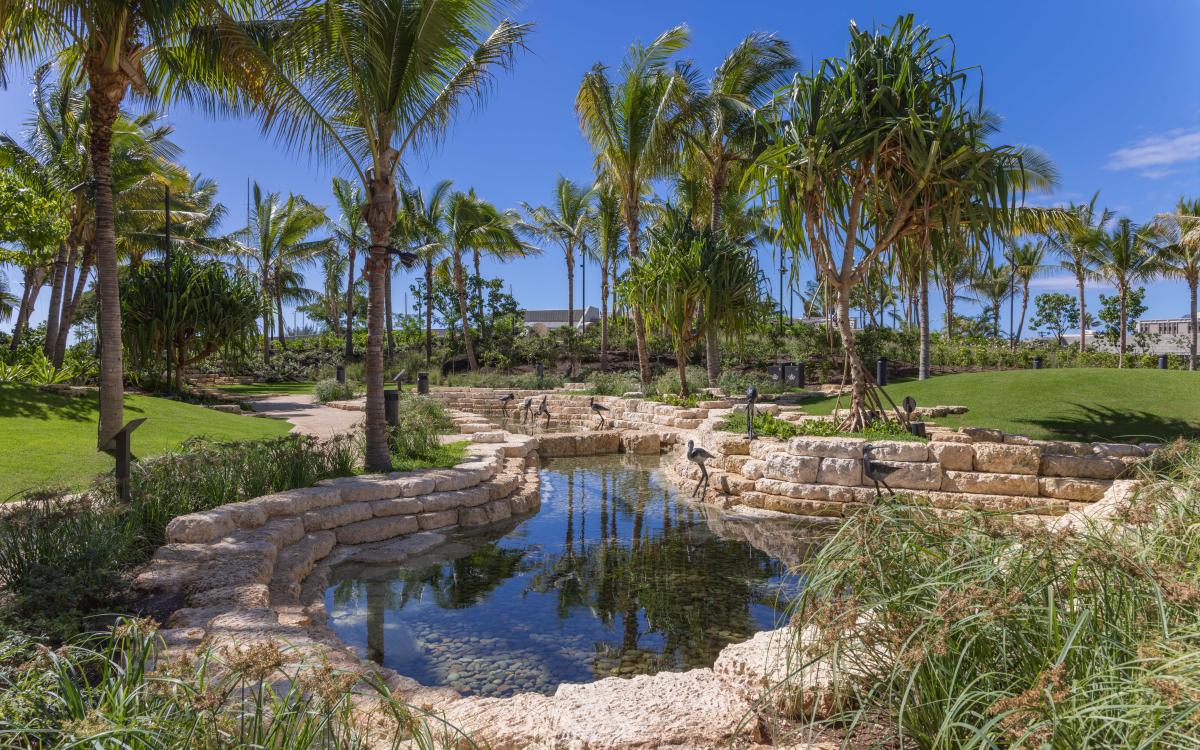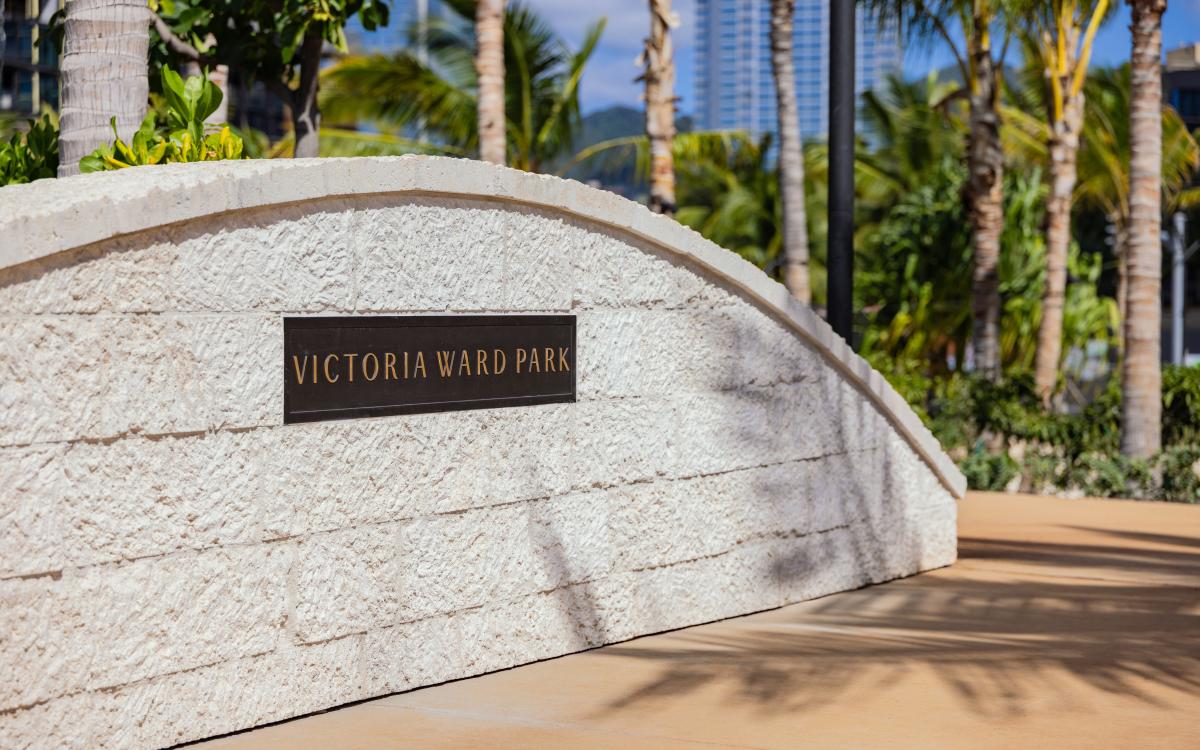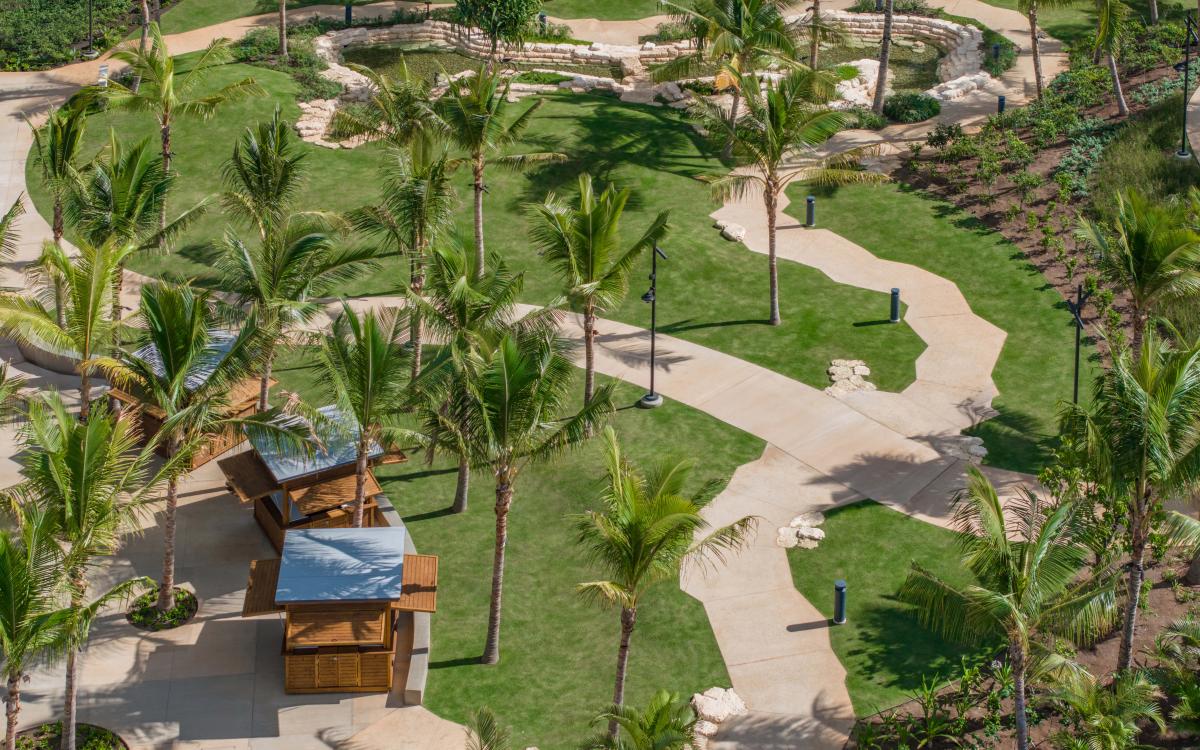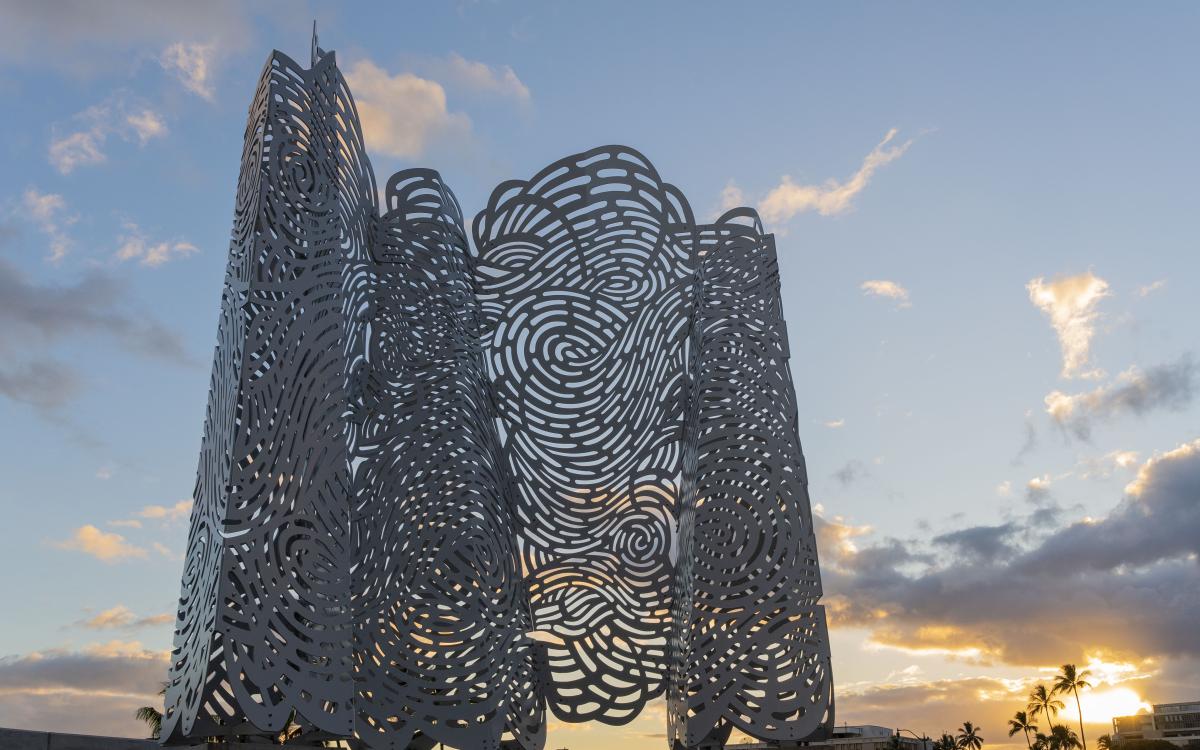Honolulu, HI
United States
Victoria Ward Park Makai is a shining example of how formerly impervious, contaminated land can be transformed into a community beacon for health, culture, and sustainability. As the first SITES-certified park in the Ward Village master-planned development, the park restores native ecology, invites community connection, and showcases resilient landscape design in the heart of urban Honolulu. Check out this short documentary on the park.
Once the site of the Ward Warehouse and its surrounding paved parking lot, the 1.72-acre area was remediated and reimagined as a vibrant green space celebrating Hawaiʻi’s cultural and ecological heritage. The park honors the area’s historic underground freshwater flow (‘auwai) through a central pond and interpretive signage, offering a visible and educational connection to natural systems that were once hidden beneath layers of asphalt.
A thoughtfully curated art program integrates sculptures and installations that reflect the surrounding natural environment. Among these is an artwork inspired by the native Ae‘o (Hawaiian stilt), reinforcing a strong sense of place. The project also salvaged mature trees from nearby demolition sites—including the adjacent Mauka Park SITES project—underscoring the design team’s commitment to reuse and ecological continuity across sites.
Challenges and innovations
Environmental and cultural constraints shaped the park's sustainable design. Subsoil contamination and high groundwater levels made traditional rainwater infiltration systems impractical. In response, the team designed the park to divert all stormwater to vegetated areas where runoff could be filtered naturally through deep-rooted native plants before entering the municipal storm drain system. This also helped raise the park’s elevation, improving flood resilience for the site and surrounding community.
Hawaiʻi’s limited supply of topsoil presented another challenge. The design team worked with what was locally available, enhancing it to meet SITES soil restoration criteria and support long-term plant health. Ongoing soil testing is in place to ensure continued performance.
The presence of a native Hawaiian burial site within the project boundary added cultural complexity—and opportunity. A preservation plan was developed to protect the site in place. Landscaping was carefully designed to avoid encroachment, demonstrating how infrastructure and cultural preservation can coexist through intentional design.
Environmental Benefits
-
Brownfield Remediation & Native Planting: Restored a previously developed site while achieving a 60% native plant coverage, reducing water demand and supporting biodiversity.
-
Stormwater Management: Rainfall is managed on-site via landscape filtration, improving water quality and reducing runoff into nearby Kewalo Harbor.
-
Heat Island Reduction: Reflective pavements and shaded areas reduce microclimate warming and improve comfort for people and wildlife.
-
Sustainable Sourcing: No wood from threatened species was used. Plants and materials were sourced from nearby producers such as Green Thumb Nursery and Hawaiian Earth, minimizing transport emissions.
Social Benefits
-
Equity and Access: Open to the public and used by both advantaged and underserved populations, the park supports equitable access to green space in an urban setting.
-
Community Engagement: Public art, educational signage, and flexible gathering spaces invite interaction, cultural appreciation, and sustainability learning.
-
Health and Wellness: Multi-use walking paths, open lawns, and shaded seating promote physical activity, mental restoration, and social connection.
-
Tobacco-Free Policy: A no-smoking policy protects air quality and public health, particularly important in densely populated neighborhoods.
Economic Benefits
-
Resource Efficiency: Water-efficient landscaping reduces long-term utility costs.
-
Support for Local Economy: Local sourcing of plants, compost, and mulch supports regional producers and lowers environmental impact from transportation.
-
Local Job Creation: The park’s development and ongoing maintenance generate both short- and long-term employment for the local workforce.
-
Recycling Infrastructure: Facilities for recyclable collection foster environmental stewardship and feed value back into the community economy.
Victoria Ward Park Makai represents a forward-thinking vision for urban parks—one that unites ecological restoration, cultural preservation, and inclusive public space. It stands as a model for how cities can embrace landscape architecture to regenerate land, enrich communities, and chart a more sustainable future.
Image credit: Ward Village






